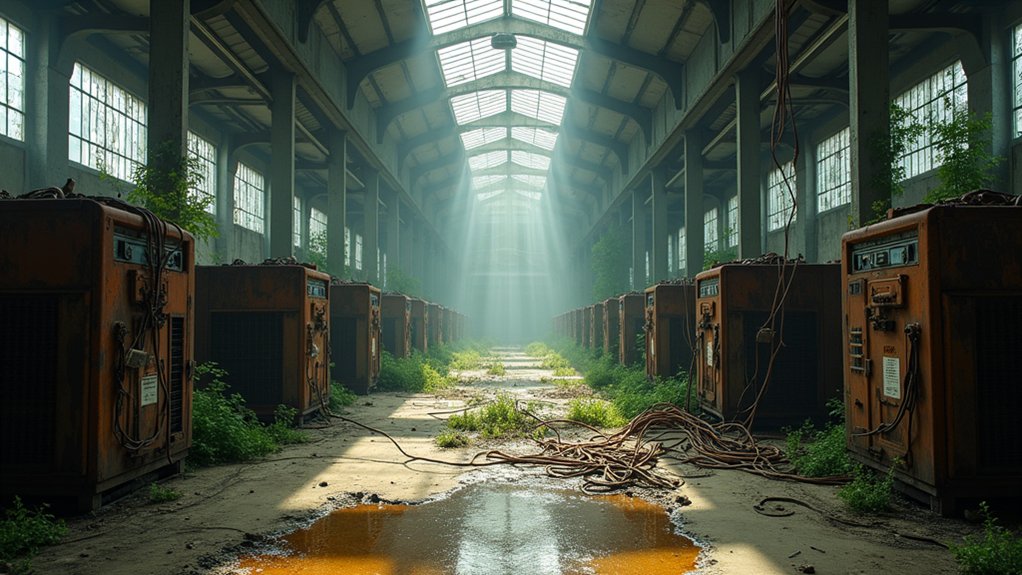A rusted gate creaks in the wind, guarding what was once a buzzing hive of Bitcoin mining in rural Sichuan, now just a ghostly ruin amidst whispering forests.
The air carries a damp, earthy scent, mingling with the faint metallic tang of forgotten machines.
In 2021, China’s government dropped the hammer, shutting down over 90% of the nation’s crypto mining capacity.
Sichuan, with its hydropower riches, was a prime target.
Closure orders came fast, power lines went dead, and this sprawling site—once humming with thousands of ASIC miners—fell silent.
Could a digital gold rush really vanish overnight?
It’s hard to believe, yet here’s the proof, crumbling before the eyes.
Walk past the gate, and the scene unfolds like a tech ghost town.
Warehouses, repurposed from old factories, slump under mossy roofs, their walls echoing with the phantom whir of cooling fans.
Inside, tangled wiring dangles like spiderwebs, a maze of power setups left to rot.
Some rigs, water-damaged from Sichuan’s notorious floods, sit abandoned—silent relics of a $14 million dream.
Imagine the miners, scrambling to haul gear overseas after the ban, only for nature or authorities to claim the rest.
It’s almost funny, isn’t it?
Building an empire on digital coins, just to see it washed away by real-world rain.
Across the region, local electricity companies were ordered to halt power supply to detected mining operations, ensuring the shutdown was absolute.
Each abandoned rig represents massive energy consumption, equivalent to powering an American household for a month.
Outside, near a gurgling river, a cracked 17-acre cement slab stretches endlessly—a stark contrast to the ancient, whispering woods around it.
Once, dormitories and canteens housed workers who saw this as a clever use of excess hydropower.
Now, it’s just eerie.
The State Council’s 2021 crackdown, tied to climate goals and financial stability, painted these operations as reckless.
Were they?
Maybe.
But standing here, smelling the rust and feeling the stillness, one wonders if something innovative got lost in the rush to control.
Traditional caution clashed with modern ambition, leaving only ruins.
This ban redirected energy resources to climate goals, prioritizing social needs over crypto profits.
What’s next for this place?
Nature might reclaim it, or scavengers could strip what’s left.
For now, it stands as a monument to a fleeting crypto era, caught between progress and prohibition.
How strange, to see the future decay so fast.









